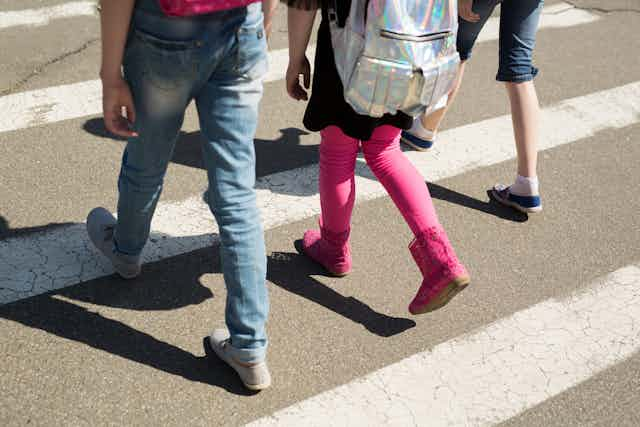In England, over 80,000 children are now in care, an increase of nearly one third since 2010. We’ve discovered that local party politics is a factor in this. Our analysis shows that, between 2015 and 2021, six or seven more children each year were taken into care in an average sized Conservative council than in an equivalent Labour council.
There have been big inequalities between local authorities in the rise in the numbers of children in care since the start of the Cameron-Clegg, Conservative-Liberal Democrat coalition government in 2010. In the north-east of England they have increased by over 60%, while in inner London they’re down almost 20%.
Previous evidence shows that the key factor is economics. Children in the most deprived 10% of small neighbourhoods are over ten times more likely to be in care than in the least deprived 10%.
But, despite talk about levelling up, child poverty has risen much faster in Labour councils than in Conservative ones. This means that we would expect the number of children being placed into care in Labour councils to rise more quickly. But the actual numbers of children going into care in Labour and Conservative councils each year is more or less the same.
Our research controlled for poverty. We found that if two average-sized local authorities were the same in terms of poverty, income and expenditure, over five years, a Conservative council would take over 30 more children into care than a Labour council.
What we did
We investigated whether rates of children in care have been growing or falling across all English local authorities according to their party political leadership.
We then used a statistical model to predict what these trends would be likely to look like were we to imagine that child poverty, average household income, and council spending on services to prevent children being taken into care had stayed the same throughout 2015-2021, rather than growing at different rates across the country. This allowed us to focus in on the specific relationship between care rates and local party political control.
By focusing on differences in these trends, rather than overall numbers, we are able to isolate factors that can explain the recent dramatic increase in numbers of children in care from factors associated with longstanding differences between local authorities.
Once again, we found that child poverty was by far the most significant factor behind the upward trend. The greater the local increase in child poverty, the steeper the upward trend in children in care. This is, of course, mainly influenced by national policies affecting employment, wages, housing costs, benefit levels and so on. Local councils have little control over those.

Then we analysed changes to care numbers in more detail. In an average sized local authority, the numbers of children in care increased by around seven or eight per year between 2015 and 2021. Before controlling for child poverty, Labour and Conservative councils’ growing rates of children in care appear virtually indistinguishable.
However, because child poverty rose almost twice as fast in Labour councils than Conservative ones, this masked a real contrast between local authorities led by the two parties.
That means that, in an average size local authority, after five years we would expect over 30 more children in care in a Conservative council than a Labour council, holding trends in poverty, income and expenditure constant. Thirty additional children in care would cost a typical authority £2.5m more per year. That’s money that we think would be better spent keeping families together.
Looking for explanations
Three reasons might explain the difference between Labour and Conservative councils. First, Conservative and Labour councils may have different approaches to supporting families and protecting children. There may be a greater emphasis in Conservative councils on removing children at risk rather than providing support to families to prevent or mitigate risks.
This was the view taken by Michael Gove, when he was education secretary with responsibility for children’s services. In a 2012 speech he argued that children were being left for too long in homes where they were experiencing neglect and abuse. “More children should be taken into care more quickly”, he said.
Second, as a result, Conservative councils may allocate a smaller proportion of their budget to family support services, or may fund different kinds of preventative services.
Third, it may be that Conservative councils allocate proportionately less funding to the most deprived areas within their local authority than Labour councils, resulting in less support for families and children in greatest need.
All these hypotheses require testing.
We aren’t saying that Conservative councillors want more children in care. Most councils are under huge pressures because of the rising costs of both children’s and adult social care services, driving several to bankruptcy.
Research shows that the steep upward trend in the numbers of children in care results mainly from national policies affecting families. It is increasingly clear that reducing child poverty, especially deep and persistent poverty, and insecure housing and low income, is the key to reducing the numbers of children in care.
But local actions matter too. Local councils cannot control national economic trends, but they can poverty-proof local services, make sure that the services focus on areas of greatest need and that services respond directly to family poverty by offering concrete help.

